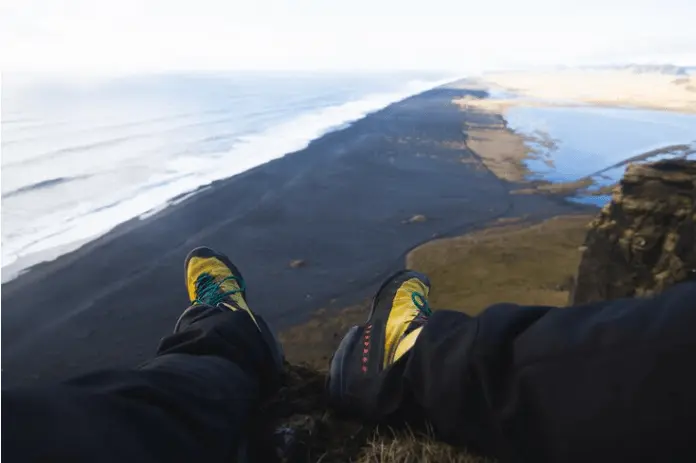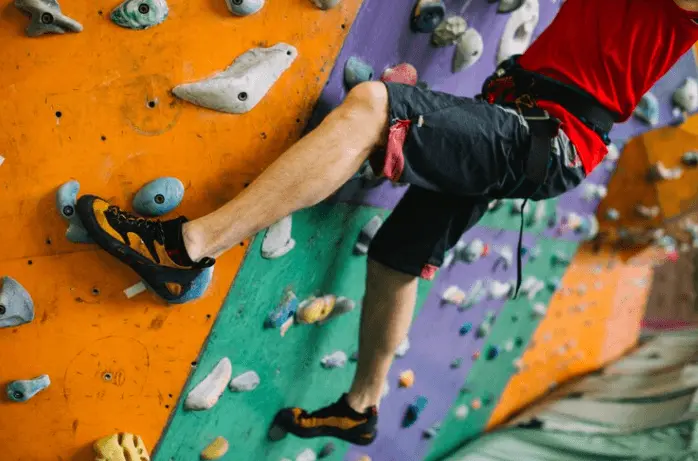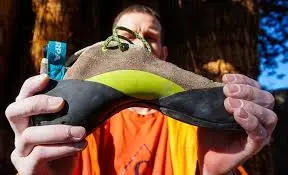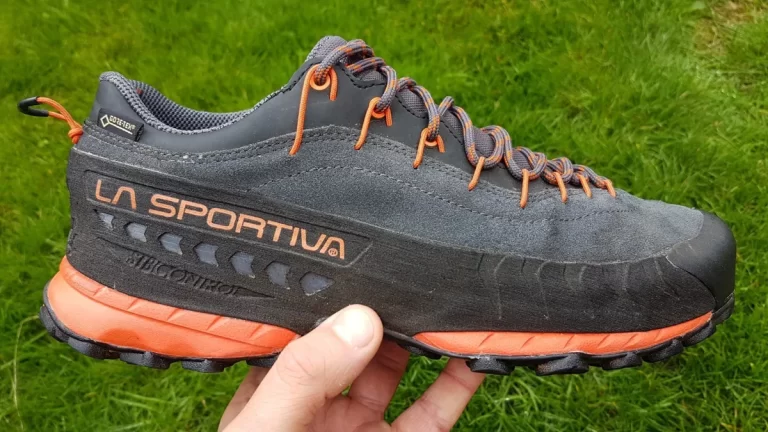14 Best Rock Climbing Shoes for begineers
We love climbing shoes and we’re sure you will too. The good news for climbers is that there are more high-quality styles and designs available today than ever before. Whether you’re looking for a rugged downhill shoe for rock challenges, a precision-edged model for long, sporty runs on limestone, or a comfortable shoe for all-day climbing on granite, we’ve got you covered. Below we’ll detail the best sneakers of 2024. For more information, check out our comparison chart and buying tips below. And if you’re new to the sport, check out our list of the best running shoes for beginners.
best Overall climbing shoes
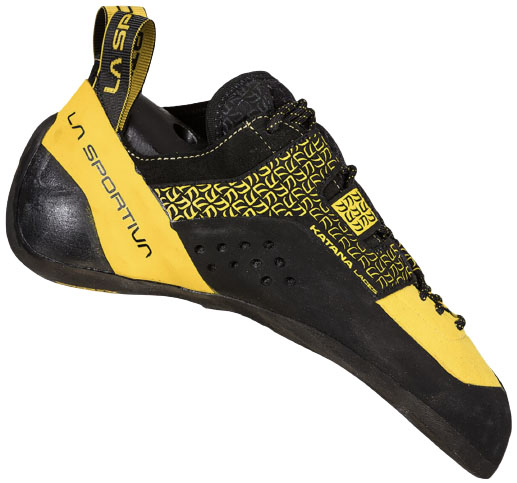
1. La Sportiva Katana Lace
Best use: sports, business, gym.
Recession: moderate
Excellent leather
What we like: Versatile but effective; Available in two versions.
What we don’t like: Expensive; Most rockers will need softer shoes.
Of all the shoes in our arsenal, the Katana Lace is the shoe we reach for the most, whether it’s sport climbing at Smith Rock, multi-pitch climbs in the Red Rock Canyons, or blistering climbs in the Creek. What stands out most about the Katana is its ability to do almost everything well: crack climbing, smudging, technical wall, slab, pocket, etc. With a wider fit, you get an all-day comfortable shoe with much more precision than a flat shoe. model like the TC Pro (heel and forefoot cushioning also improves comfort and breathability). When used forcefully, the katana’s ability can rival that of the otake described below. And unlike many climbing and mountaineering shoes, the Katana’s moderate drop and wide toe box are ideal for wide feet or climbers who don’t like a more aggressive design.
The Katana Lace was updated last year and the big news was the release of two models: a yellow and a white version. The Yellow Katana is similar to the previous design, with tough but sticky Vibram XS Edge rubber coming together to form a durable platform. On the other hand, the white version has softer XS Grip 2 rubber, which offers more responsiveness and flexibility. Both models feature an updated heel counter for improved binding performance, which really increases the Katana’s all-terrain versatility (though neither is ideal for active climbing). The upgrades are attractively priced ($219; the Katana is one of the more expensive shoes here), but the versatility and performance are hard to argue with for both new and experienced climbers.
Best cheap climbing shoes for beginners
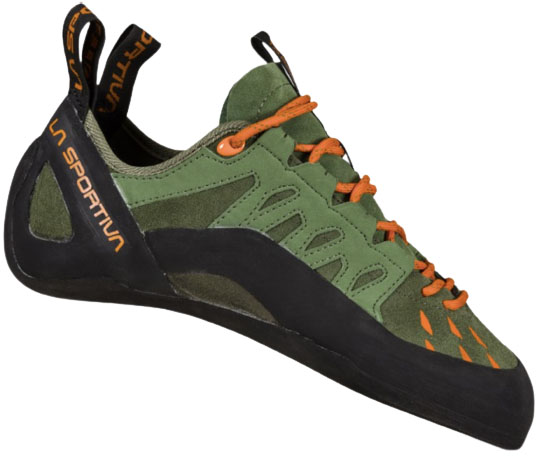
2. La Sportiva Tarantula
Best Use: Beginners
Lowering: flat
Excellent leather
What we like: Durable, comfortable shoes for just $89.
What we don’t like: These are not sneakers.
Whether you’re new to climbing or looking for affordable shoes for the gym, there’s nothing better than the La Sportiva Tarantulace. Let’s not mince words: what we like most about this shoe is its price: in an age where climbing shoes have skyrocketed to over $200 a piece, the Tarantulace has kept its cost low, with a suggested retail price of $89. But they still meet all the needs that most recreational climbers need: an unlined leather upper that will conform to your foot over time, a roomy flat toe box for superior comfort, and a FriXion RS rubber outsole that is sticky but durable. In short, it’s no surprise that Tarantula shoes are seen in the gym and on the rocks more than any other shoe.
Most new climbers are not yet very demanding about their climbing shoes and prioritize factors such as durability and comfort over performance. However, if you’re a quick learner, are a strong athlete, or are primarily interested in climbing, it might be worth starting with a more specific design. In our experience, we have found tarantulas to be very stiff and insensitive; Combined with the roomy design, this makes them a great shoe for all-day comfort (like moderate multilevel trails or long gym sessions), but they’re not ideal for particularly steep climbs or techniques.
best rock shoes

3. Scarpa Instinct VS
Best use: stones, sports, gym.
Recession: moderate
Upper: synthetic
What we like: Durable shoes that offer incredible support.
What we don’t like: Some may want a softer shoe.
The Instinct VS is a relatively new shoe from Scarpa that is quickly gaining popularity. It has proven to be a versatile choice for sport climbing and rock climbing, but is also a popular choice for indoor and competition climbing (in particular, 11-time American Bouldering Series champion Alex Puccio calls Instinct VS his favorite shoe). . The rubber toe and heel are great for steep rocks, and the medium-flex edge provides more shear force than we’re used to seeing in rock shoes.
Made from micro-faux leather, the Scarpa is less elastic than leather boots, but has an elastic panel at the top of the foot for a comfortable fit. The firm feel and moderate drop set it apart from most shoes designed for high-performance climbing and bouldering, but the thin 3.5mm outsole adds responsiveness and flexibility (note the XS Edge rubber on the man has been replaced by XS Grip 2 on the women’s model with softer and more stable shoes). Scarpa also offers the same design in a softer version with a 2mm sole (VSR), ideal for lighter climbers or those who prefer a more reactive feel. The impressive Instinct family is completed by the Sport model and the Sneaker (S), each of which is a high-quality premium shoe in its own right.
best climbing shoes for granite and crack climbing

4. La Sportiva TS Pro
Best use: traditional
Lowering: flat
Excellent leather
What we like: Without a doubt, the best granite and crack climbing shoes on the market.
What we don’t do: Too expensive and too specific.
If you’re reading this, chances are you know who Tommy Caldwell is. In 2015, he climbed a small rock called Dawn Wall in Yosemite and these TC shoes were made for the feat. As a result, the TC Pro is an ideal machine for climbing on both vertical and non-vertical terrain, especially granite. While we often associate ballet flats with beginner shoes, these shoes are a notable exception: Their rigid construction and sticky XS Edge rubber make them excellent and trimmer-friendly. But the reason most climbers love the TC Pro is its superior performance. Featuring padding on the tongue and ankle and a mid-rise upper, they offer innovative protection for both thin and wide feet.
La Sportiva recently updated the TC Pro, the first update since the sneaker’s debut in 2008. Obviously we were nervous to see the updated design of our beloved TC Pro, but all the changes are positive. Without affecting the overall look of the shoe, Sportiva has corrected the flaws of the first version, including the rotating tongue, lamination and stiffness of the laces. We found the dimensions to be similar, although the adaptation period is quite intense due to the rigidity of its structure. Finally, like its predecessor, the second-generation TC Pro is a shoe that can handle everything from 5.14 granite test routes to moderate multi-pitch routes, providing the support, protection and durability that climbers need. professionals need. Rock climbers, rock climbers and most sport climbers should look elsewhere.
best sports shoes for climbing
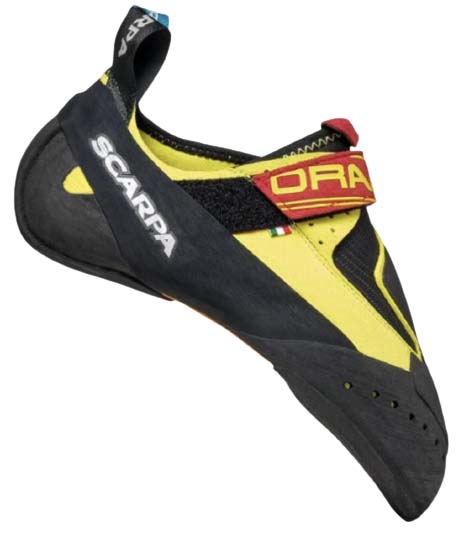
5. Scarpa Drago
Best uses: gym, rocks, sports.
Stagnation: aggression
Upper: leather/synthetic
What we like: Custom sneakers at a good price; Available in regular and discreet sizes.
What we don’t like: Lack of variety.
As climbing gyms and competitions evolve, and as climbers become more creative in their use of gauges, boards, and the occasional circus trick, the demand for custom footwear increases. Our performance climbing styles feature an ultra-cushioned construction (with little or no midsole), soft, sticky rubber and a rounded toe for improved volume distribution. In this category the Scarpa Drago takes first place thanks to its excellent fit, build quality, large rubber inserts and good sharpness despite its design.
best of the rest

6. The Otaki Sportswoman
Best use: sports, commerce.
Recession: moderate
Upper: leather/synthetic
What we like: Comfortable and versatile shoes, particularly suitable for technical tasks.
What we don’t like: Not ideal for crack climbing; Some people will find the wide tip too sloppy.
The Otaki is a relatively recent innovation from La Sportiva that combines an accessible fit with a high level of performance for both sport and professional climbing. We’ve used this shoe on everything from vertical ledges to steep limestone pockets to toe cracks (this was our Moonlight Buttress free climbing shoe) and were very impressed with its performance. In many ways, this is a Velcro replacement for the previous Katana shoe, but with a more aggressive drop (latest PD 75 compared to Katana PD 55) and S-Heel technology that provides extra traction on steep slopes (note (a due to the velcro) ) closure and low profile) Otaki is not the best choice for most cracks).
We used to put Sportiva’s classic Miura VS at the top of this list, but the Otaki has become a more popular choice thanks to its accessible fit (the Miura VS has a unique toe box that fits some, but not many). The snug heel is ideal for those with small feet, while the wide toe box offers comfort and versatility for a variety of foot shapes. Unlike the Katana, the heel of the Otaki is unlined, creating a less soft and breathable feel, but with much more precision, especially in the heel. Hopefully by now it’s clear how to prioritize both shoe models: the Katana remains our choice for all-day work and crack climbing, but the Otaki offers a slight advantage for steeper terrain or more challenging. And since these are shoes you’ll probably want to take off when you change lengths (even multiple lengths), the convenient double-strap Velcro closure makes sense.
7. Scarpa Vapor V
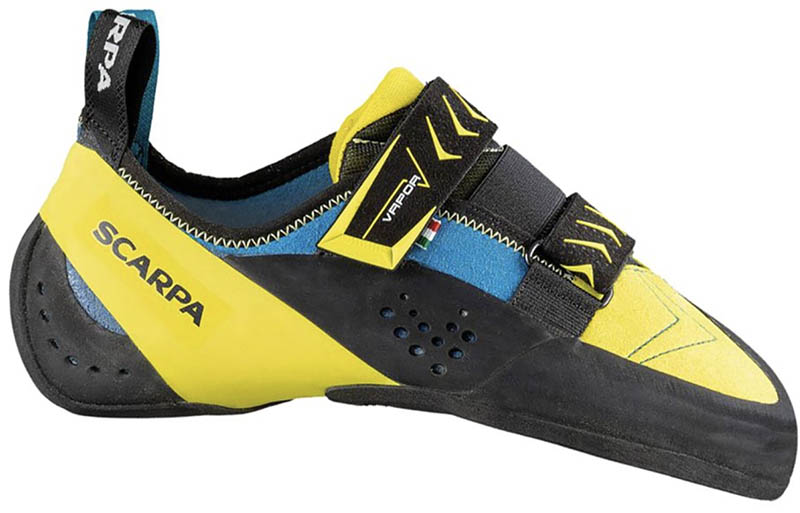
Best use: traditional, sports, beginners.
Recession: moderate
Excellent leather
What we like: Comfortable and unique shoe for intermediate climbers.
What we don’t like: Not good for rocks.
The Scarpa Vapor V is a versatile model designed to combine comfort and performance on a variety of surfaces. Whether you’re looking to upgrade your entry-level shoe or a versatile design that can handle the versatility of multi-pitch climbing, the Vapor V could be your answer. Similar to the previous La Sportiva Katana Lace, the Scarpa features a mid-low profile, soft suede upper, reinforced mesh tongue and a grooved platform ideal for vertical and technical rocks. The wide toe box offers a high level of comfort, and you can experiment with the fit depending on your goals: the relatively loose fit is ideal for everyday use on multi-pitch slopes (and better on boards and cracks), while we prefer a looser fit wide. There is a red dot on the sports rock.
However, the Scarpa Vapor V is not suitable for all climbers. First of all, because the XS Edge rubber is only 3.5mm thick, this shoe is known to wear out faster than most shoes (the Yellow Katana is 4mm thick, in comparison). Secondly, not everyone will like Velcro; We generally prefer lace-ups when we expect to encounter cracks on multi-level climbs. Finally, while the Vapor V is better than most at balancing the priorities of the competition, it’s not as good for steep climbs or rocks, although the nice rubber tip makes it a little more versatile than the Katana. But as a shoe that can tackle most disciplines while maintaining comfort, Scarpa’s best-selling Vapor V deserves to be on your radar.
8. Sporty Testrossa
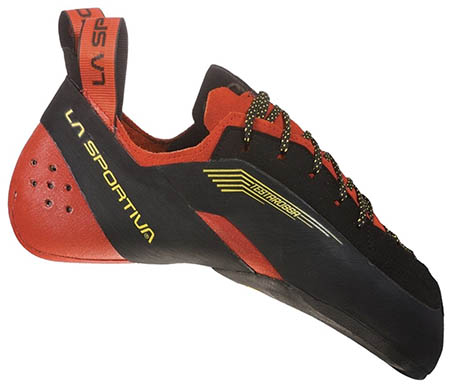
Best use: sports
Stagnation: aggression
Upper: leather/synthetic
What we like: The perfect fit and smart design create a complete edgebander.
What we don’t like: Padded frame lacks support; The thin rubber sole wears out faster than most.
Known for its elegant appearance and exceptional performance, the Sportiva Testarossa is essentially a climbing Maserati. Don’t let the laces fool you: these are very aggressive sport climbing shoes, designed for precise management of vertical or steep slopes. They cover both wide and narrow feet, have an extremely comfortable fit, and the leather and synthetic upper conforms quickly to the foot without stretching prematurely. Added to this is the flexible Vibram design.
In addition to the high price, the Testarossa’s responsiveness and grip come at the expense of support and durability. While we like the contact feel on most terrains, the cushioned design can quickly cause fatigue on long vertical slopes (and since you want a shoe that’s grippy enough for work, it’s definitely not the most comfortable option you can choose). keep it up your sleeve). The Testarossa also wears out faster than others thanks to the soft XS Grip 2 rubber and thin body (3.5mm instead of the standard 4mm). Because of all these factors, we often draw Katana or Otaki, as well as Testarossa, for burns with red spots. When it comes to performance, it’s hard to beat the shoe’s precision and grip for little hands.
9. Bottura Endeavor 2.0
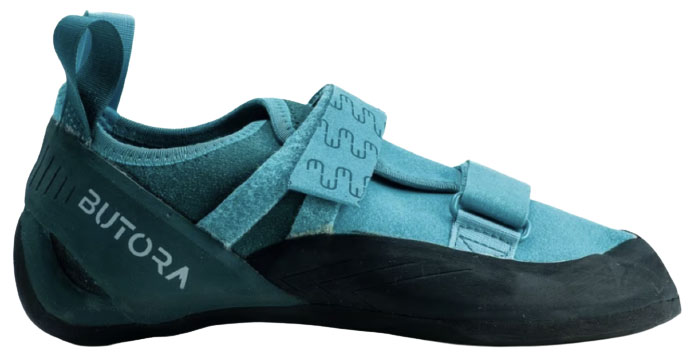
Best use: Beginners, gyms and professionals.
Lowering: flat
Upper: synthetic
What we like: Great combination of price, performance and comfort.
What we don’t like: Not ideal for steep terrain or cracks.
Butora may not be as well-known a name as Scarpa or La Sportiva, but the Korean company has established itself as a major player in the American climbing shoe market. Before launching the brand in 2014, footwear designer Nam Hee Do spent more than 30 years in the industry (including collaborating with Chris Sharma on the Shaman design), so it’s no surprise that Butora shoes show “great attention to detail.” And use quality materials. The recently updated Endeavor 2.0 is their popular workhorse: a durable synthetic upper, a low drop, an ABS midsole for enhanced edge durability, and sticky NeoFuse rubber offer versatile performance for beginner and intermediate climbers. You want to compromise on quality.
If you’re having trouble finding a shoe that fits, the Endeavor 2.0 is a particularly versatile option, available in half sizes from 34 to 49 and two widths. Compared to the cheaper Tarantula La Sportiva (the Tarantula Velcro version featured above), it’s noticeably less brick-like and has a stickier rubber outsole (Butora uses Neo Fuse on its higher-end models)—great news for those new at speed. Take it to the next level. However, it’s important to keep the Endeavor in check: with minimal elevation changes, it’s not the best choice for gyms and outdoor climbers who often trek on overhanging terrain. We also don’t like shoes with Velcro that gets stuck in the slots (they can have painful pressure points and can come undone if they get stuck). But for rocks ranging from slabs to vertical rocks, the Endeavor 2.0 strikes a great balance for those who prioritize price, performance and comfort.
10. Sports scales
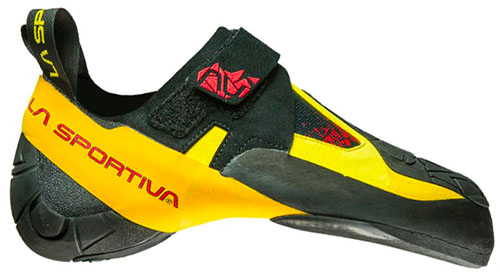
Best use: stones, sports, gym.
Regression: aggression
Upper: leather/synthetic
What we like: sensitive, resistant and very comfortable shoes.
What we don’t do: Be too gentle to achieve great success; Lack of support for long and vertical positions.
One of La Sportiva’s latest innovations, the Skwama, a high-performance climbing shoe, is comparable to the Drago model described above in its aggressive yet highly responsive design. With a thin midsole and flexible Vibram XS Grip 2 rubber, the Skwama moves like an extension of your foot and lets you feel every contour of the rock. Furthermore, the popular P3 Sportiva midsole ensures that the shoe maintains cushioning over time. The advantages of this design are evident on steep slopes: the sole offers incredible heel-toe engagement precision (thanks to the large heel-toe rubber and the ergonomic S-shape of the heel) and places the foot in an aggressive position that allows you to sit. on them. Sharp corners and protrusions.
One of the most notable features of the Skwama is its high level of comfort thanks to its wide toe box, soft construction and fairly smooth flex (based on a PD 75 last, while more aggressive shoes like the Testarossa use a PD 85 last). . The most obvious disadvantage of this soft design is the lack of support underfoot, which makes the Skwama a poor choice for long casts (especially standing) and does not inspire confidence on vertical edges. Those who are used to firmer shoes will find that their feet grow noticeably better with the Squama. But for sport climbing and steep climbs, many are quickly becoming the preferred choice. Finally, Skwama also has a vegan design for the same price that doesn’t stretch as much as leather (and will keep your conscience clear, too).
11. Delirium develops

Best Use: Cruiser, Gym.
Slope: flat
upper skin
What we like: Great all-round slippers, especially good for delicate cuts.
What we don’t like: It’s not lined and you can’t adjust the fit.
More modern climbing soles (like Drago and Skwama above) are designed for cutting bolts and rocks on steep slopes: they are very soft, relatively aggressive and have a snug fit thanks to the Velcro closure near the ankle. But the Evolv Rave is old school with a complete design, flat shape and universal intentions. This is Steve Davis’ favorite shoe for Indian Creek splits (they have a very narrow toe box perfect for splits). And at just $139, it’s also a good choice for those just starting out (both outdoors and indoors). Plus, the Rave is exceptionally comfortable, quick to put on and take off, and fits your foot perfectly.
Compared to Five Ten’s popular Moccasym, the Evolv Slipper is stiffer (read: more support for longer rides) and the snug heel offers an overall more secure fit. And you’ll definitely notice the difference between the Rave leather upper and the Moccasym leather upper: leather tends to provide a more secure fit as the shoe adapts to the contours of your foot over time. But not everyone is a fan of slippers: You can’t customize the fit like you can with Velcro or laces, and some climbers (especially those new to climbing) will appreciate the extra padding. But for the right user, Rave is a convenient, affordable, and versatile option. And if you like the idea of slippers but want something more aggressive, the Scarpa Instinct S or La Sportiva Mantra are worth a look.
12. Bostick Shoe
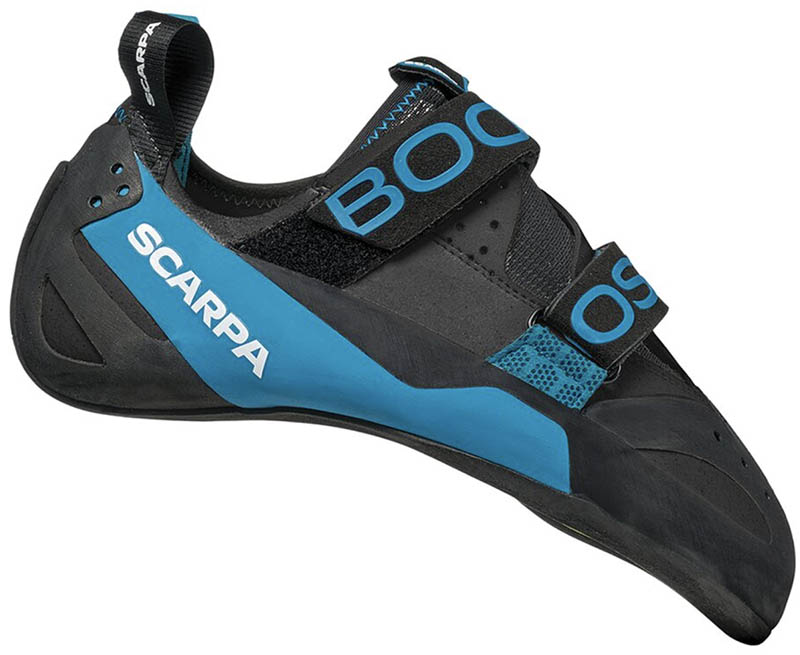
Best use: sports, rock, gym.
Stagnation: aggression
Upper: leather/synthetic
What we like: Very precise and responsive, but always supportive.
What we don’t like: Expensive; Thin rubber means repeatable precision.
The Boostic has long been one of Scarpa’s best running shoes and has received a major overhaul in the last year. Originally designed by visionary designer Hans Mariacher, the Boostic is simply superb for elite climbers, handling everything from overhanging terrain to steep sections and technical overhangs with precision support. It’s precise, powerful and the latest version is more competitive than ever. More importantly, Scarpa has reduced weight and bulk by using thinner but equally strong materials in both the upper and lower sections (including replacing the previous version’s 4mm rubber with 3.5 rubber). The result is greater sensitivity without sacrificing support (even if the sole will need to be replaced frequently), making the Boostic an exceptional shoe for long technical climbs, whether on single pitches or for all-day activities.
The Boostic can be considered the more performance-oriented sibling of the Vapor V: both are versatile, convenient and comfortable, but the Boostic offers more structure and fit, thanks in large part to its innovative closure system. Many climbers have different reinforcements (larger sizes for longer routes or via ferratas and smaller sizes for sports fields). More importantly, for the updated version, Scarpa recommends halving the size of the classic Boostic, as the thinner material allows for a roomier shape and shorter break-in period. Finally, while it can function as a climber (with large rubber inserts that grip your toes and heels), gravel wrestlers and indoor climbers will likely want something softer and less supportive.
13. La Sportiva Mitus Eco
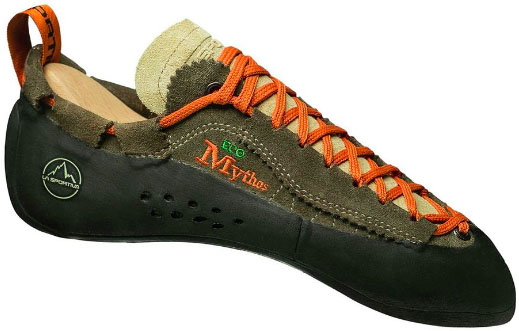
Best Use: Beginners, Professionals.
Lowering: flat
Excellent leather
What we like: A tried-and-true classic made with 95% recycled materials.
What we don’t: Ultimately, it’s not very performance-oriented.
The Mythos is one of the most popular shoes on the market. And for beginners getting into nature, this is an incredibly affordable and durable option. The flat, everyday-wear leather upper and premium eco-friendly rubber on the outsole also provide quality functionality. This is a great option for beginners and intermediate climbers.
While the Mythos is great for beginner climbers or those looking for all-day comfort, it’s not a very versatile shoe. It is not designed for long athletic climbs or for traversing surfaces with your heels and toes. Even among beginner shoes on the market, they are not the best choice for painting or welding. Heck, we don’t even recommend using the Mythos for gym climbing – it’s too expensive and too expensive for what you need. But they’re definitely among the most durable and comfortable of the bunch, making them a good choice for those new to climbing. And it certainly doesn’t hurt that the Mythos Eco is made with 95% recycled materials from Sportiva’s cutting room.
14. Sirius’ peerless lace
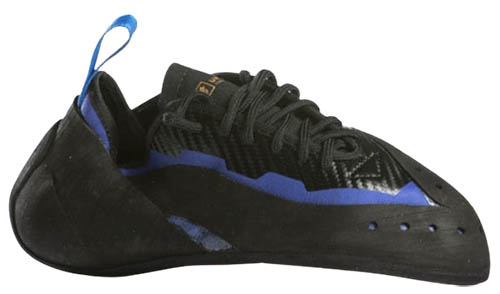
Best use: sports, rocking.
Stagnation: aggression
Upper: synthetic
What we like: Cheaper than competing products and made in the USA.
What we don’t like: Hard to find in stores.
If you haven’t heard of Unparallel yet, here’s an introduction. After Adidas bought Five Ten in 2011, its production was moved overseas, leaving its Southern California factories and many former employees unemployed. Unparallel was soon born, occupying the abandoned premises of Five Ten with the determination to carry the torch of American production. Today, this popular company produces a full line of climbing, mountain biking, and commuting shoes, with a focus on high-quality materials and construction.
Unparallel’s Sirius Lace is one of the most popular running shoes, rivaling previous Testarossa models in terms of precision on vertical and overhanging terrain. The Sirius is slightly stiffer than the popular La Sportiva lace-up model, providing more support and durability on technical edges. They also add staggered laces and a rubber toe cap for better toe hold on steep, rocky trails. However, you sacrifice the glove-like fit of the Testarossa with its synthetic upper, and we had a hard time finding this shoe to try in person. Overall, Unparallel may not have the same recognition as brands like La Sportiva and Scarpa, but it’s a rising star, and it certainly doesn’t hurt that its shoes are $20 to $50 less than the competition.
15. La Sportiva Solution
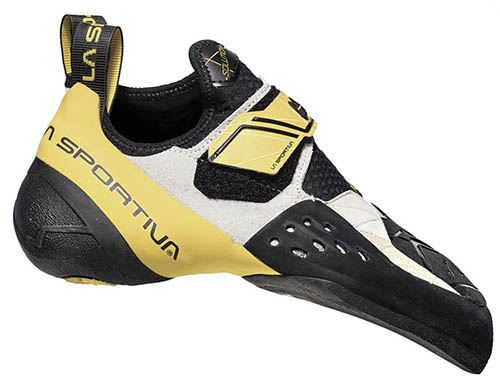
Best use: sports, rock, gym.
Stagnation: aggression
Upper: leather/synthetic
What we like: Classic climbing and bouldering shoes.
What we don’t know: It can’t keep up with growing competition.
The solution, of course, lies in great shoes. Over the years, it has been the choice of some of the world’s best climbers, performing well both indoors and outdoors, and mastering both steep bouldering and sport climbing. Like the Testarossa before it, it avoids small splashes like a dream and features sticky and responsive Vibram. . Mountaineers have long appreciated the shoe’s pointed toe, especially the presence of chalk pockets, and like most Sportiva downhill shoes, the P3’s platform maintains the shoe’s shape over time.
What solution, despite all this praise, is so low on our list? In short, the competition for climbing shoes has become fierce. When it was first launched in 2007, it featured a cutting-edge design that provided maximum performance on challenging climbs. Today, aggressive, precision-oriented running shoes are a dime a dozen. Furthermore, this solution is not particularly durable and many find the heel awkward and inadequate, while many new shoes are almost perfect (for the same price). If you’re a die-hard fan, keep your shoes on (or opt for softer, narrower shoes). But if you’re looking for your first aggressive climbing or sport climbing shoe, you’ll want to check out the list.
16. Scarpa Veloce
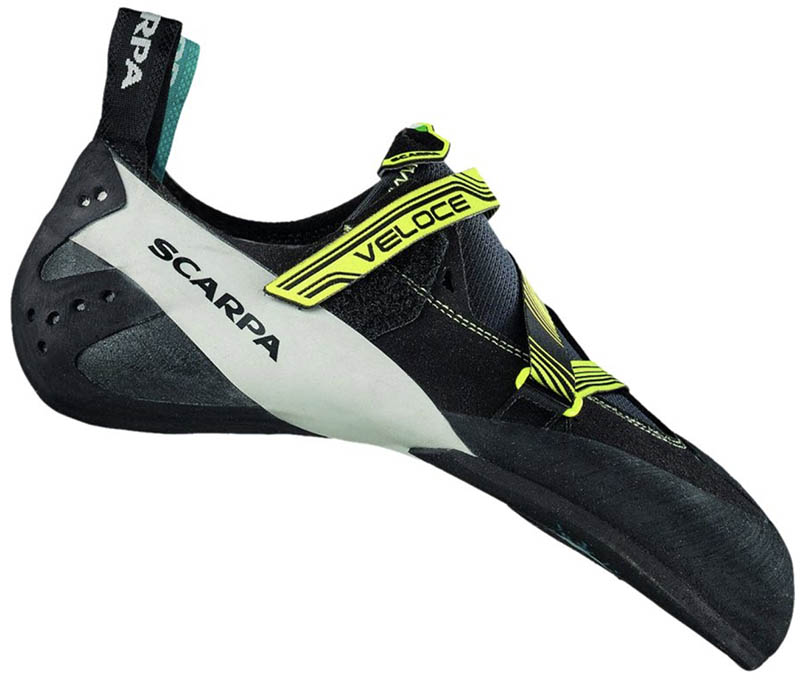
Best Use: Gym, Beginners.
Recession: moderate
Upper: synthetic
What we like: Better results in the gym than most entry-level models.
What we don’t like: It’s expensive for an entry-level shoe and the outsole isn’t particularly durable.
In the past, beginners usually started with low-angle outside boards, above which hardwoods such as tarantulas and mites shone. But as more climbers try the sport for the first time on indoor walls (read: steeper routes with bigger pitches), there’s a new demand for softer, lower entry levels. The Veloce is Scarpa’s answer, combining the comfort of gym climbing with a comfortable fit and a relatively affordable price that significantly undercuts the competition. $175 may seem like a huge investment for beginners, but it’s still much cheaper than most of the other options on this list.
17. Evolution of the Shaman
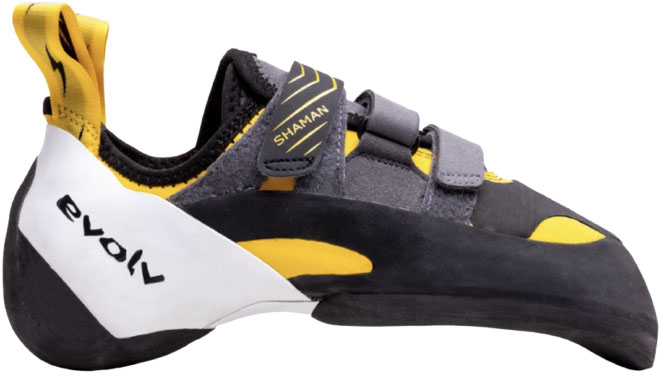
Best use: sports, rock, gym.
Stagnation: aggression
Upper: synthetic
What we like: Durable shoes for steep climbs.
What we don’t like: Some sport climbers and rock climbers need softer shoes.
Designed in part by Chris Sharma, the Shaman is suited for the type of climbing Sharma loves most: steep, limestone endurance sport routes. They handle this terrain incredibly well, exploring small hollows, approaching positive coral reefs, hooking their toes into tuff-like formations, and navigating small ledges. Trax SAS rubber is very tacky and has a variable tread thickness to ensure durability and flexibility across the entire sole. Meanwhile, the synthetic upper maintains a snug fit over time, and the three Velcro straps are thin enough to leave plenty of room for elastic on the toes.
The Shaman was updated last year and now comes in four different styles: a lace-up version (available in large and small sizes) and a Velcro version (also available in two sizes). Like its predecessor, the Shaman Four continues to feature Evolv’s exclusive “Knuckle Box” and “Love Bump” technologies that keep your foot securely and comfortably in place. And unlike typical Velcro shoes, the Evolv are relatively durable, like previous Instinct VS models (however, the split sole allows for more flexibility than a model like the Katana). Modern climbers and gymnasts may want a sleeker design, but the Shaman offers best-in-class power and precision on ledges and steep climbs.
18. Fifteen Hyangel
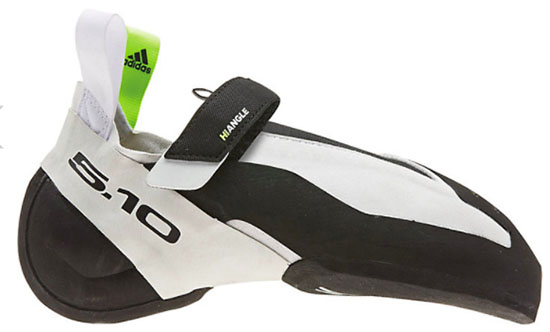
Best use: stones, sports, gym.
Stagnation: aggression
Upper: synthetic
What we like: The best slut in the business; very comfortable.
What we don’t like: Lacks fit and next-to-skin comfort; Difficult to reach.
Like the Scarpa Instinct VS and La Sportiva Skwama above, you’ll likely see the Five Ten Hangle on the feet of many professional climbers or athletes. Featuring a huge sticky rubber toe cap, an aggressive and responsive bottom profile, and a Velcro strap that keeps the shoe from slipping off the heel hooks, this shoe is perfect for steep climbs. Perhaps the most notable feature is the price: While most competitors range from $190 to $220, Five Ten (aka Adidas) has managed to keep the Hiangle relatively affordable at just $150.
The previous Hiangle had a tendency to warp and become flexible over time, but the current version replaces the leather upper with an unlined synthetic microfiber. While this results in a grippier shoe throughout its life, some climbers still prefer the snug fit and comfort that leather provides (if you’re wondering, check out partially insulated shoes like the Skwama). But otherwise, the updated Hiangle remains largely unchanged and remains a high-performance offering for sport mountaineers and serious climbers, at least if you can find it. As of this writing, inventory is very low (which seems to be a recent trend for Five Ten models). Five Ten also makes the Hiangle Pro, which adds a wrapped sole to the front of the shoe, eliminating the edge and increasing contact with the plastic handles.
19. Upgrading Black Diamond
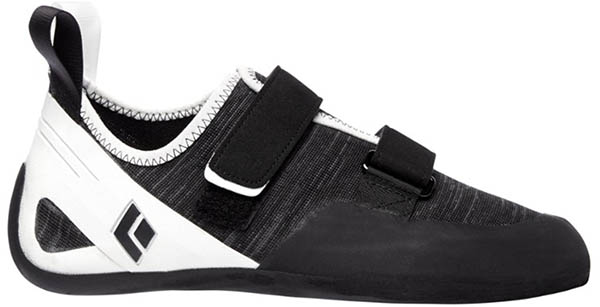
Best Use: Beginners
Sag: flat
Upper: synthetic
What we like: Lots of flags for beginning climbers.
What we don’t: Too limited for some; These are not performance shoes.
Black Diamond’s Momentums are designed specifically for beginner climbers who want comfortable shoes that won’t break the bank. In fact, it’s one of the few models still available for $100 or less. With the Momentum, you get a unique knit upper for breathability and all-day comfort, as well as premium Neo Fuse rubber underfoot. Black Diamond continues to improve the quality of the shoe, with the latest update including a softer lining and toe cap, an improved midsole for better traction, and an updated fit with more stretch from toe to heel. Overall, this is a solid and very affordable option for new climbers or those looking for a training tool for the gym.
However, keep in mind that you get what you pay for here: the tongues on our pair of Momentums tended to bunch under the Velcro closure, and we found the toe box to be too tight. Additionally, a knit upper requires a lot of compromises in terms of durability and fit, which is especially important if you climb outdoors. If Momentum isn’t for you, it’s worth checking out Black Diamond’s more performance-focused offerings. In particular, his business side and aggressive shadow became very popular throughout his short life. It’s worth noting that all BD shoes use Butora’s Neo Fuse rubber, which is sticky and incredibly durable. But brand loyalty can be strong, and we’ve found several reasons to part ways with our favorite Italian shoes.
Tips for buying climbing shoes:
Shoe types: cruiser, sport, bouldering, gym.
Stagnation: regular, moderate or aggressive.
Soft vs Hard
Fastening: laces, Velcro or slippers.
Upper: leather or synthetic.
eraser
Fit and size
Versions for men and women.
Climbing Shoe Tips for Beginners
Shoe types: cruiser, sport, bouldering, gym.
There are as many styles of shoes for climbing as there are for bouldering, and the two need to be properly combined to achieve the best results. Sport climbing, rock climbing and traditional climbing are generally as similar as apples, oranges and bananas, which means they are very different. Shoes designed for hanging rocks will be painful and ineffective if your hand cracks. Likewise, flat, stiff shoes that are ideal for board climbing will be clunky and useless when trying to negotiate steep terrain. However, whether you’re rocking, adjusting gear, or cutting bolts, stone will dictate your shoe style more than discipline. Granite rises differently than sandstone, which rises differently than limestone, quartzite, basalt, etc. Obviously, no classification is perfect, and a good understanding of the terrain allows these distinctions to be made.
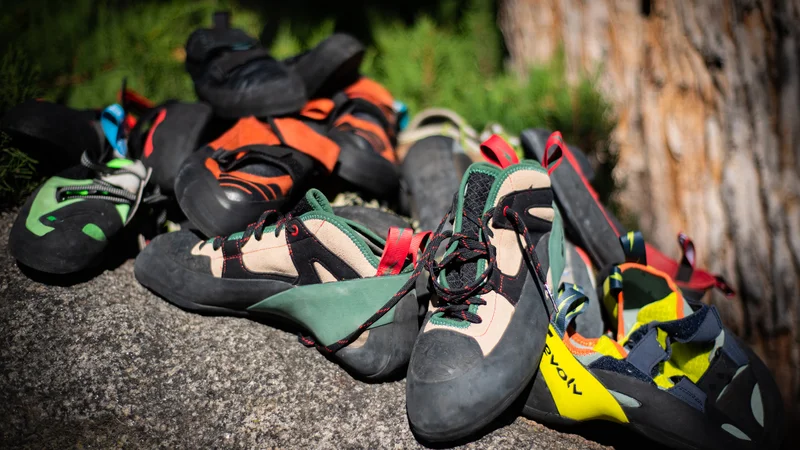
traditional
Commercial climbing is usually done on slabs or simply vertical terrain and often involves many cracks. For this reason, low shoes, also considered multipurpose and non-aggressive shoes, are the most effective models. These shoes tend to be more comfortable than their more aggressive counterparts, but comfort shouldn’t compromise performance. Some flat shoes offer better performance on slabs, technical climbs and cracks (e.g. La Sportiva TC Pro). Look for little to no drop, a durable midsole, a comfortable fit, minimal elastic in the heel and toe, solid ankle protection, and, most often, laces. However, the more technical and steep a traditional route is (like a 5.12 toe or a 5.11 fine crest on a granite pointer), the more you will prefer a shoe with a moderate to aggressive drop. For vertical faces and small chapped fingers, a model like the La Sportiva Katana Lace is much better suited than the bulky TC Pro.

sport
For sport climbing on vertical or slightly less vertical terrain (such as Smith Rock or New River Gorge), you can wear relatively stiff shoes with a moderate elevation gain. These models are ideal for climbing slopes where edge precision is critical. They feature a sharp-edged platform, a grippy heel with a slingshot edge, a solid midsole and a lace-up or Velcro closure. Our favorites are La Sportiva Otaki, La Sportiva Testarossa and Scarpa Boostic. For steeper sport climbs (like Kalymnos, Reda or even in the gym) we look for softer and more aggressive shoes like those described in the bouldering section below. The La Sportiva Skwama is a great example: a soft sneaker with an aggressive low-cut Velcro design and lots of rubber in the forefoot and heel.
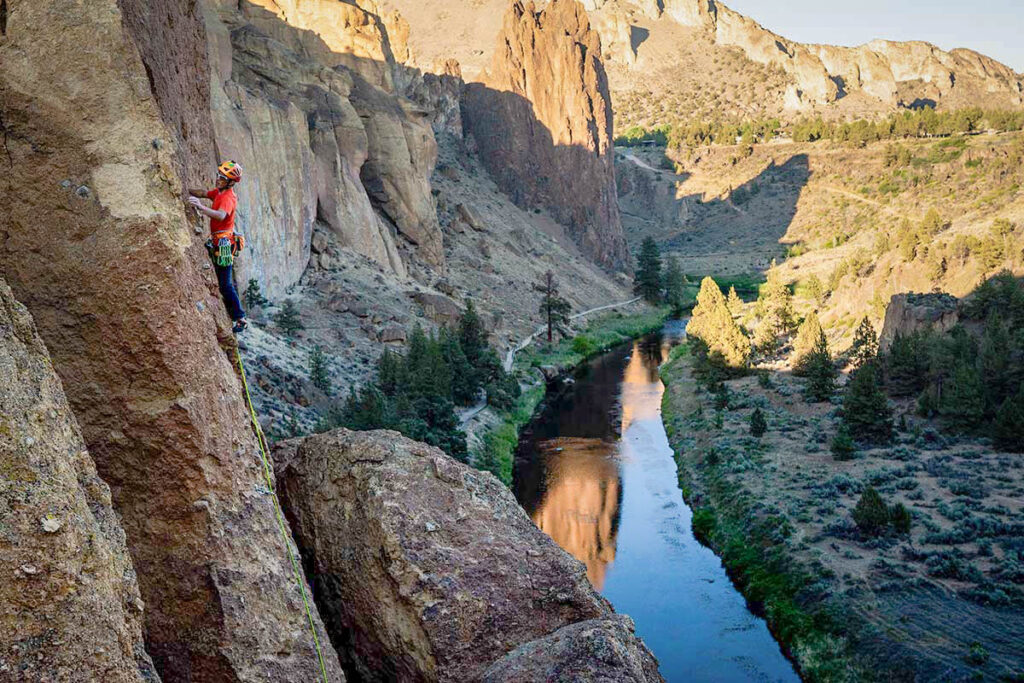
Rock
Shoes for bouldering, both indoors and outdoors, have a stable instep, a wide rubber toe cap, hypoallergenic elasticity, a rounded rubber heel, and a hybrid closure (often a spring shoe with a single Velcro strap). These shoes, the Scarpa Instinct VS, for example, shine on steep slopes as they stick to your toes, heel or pieces of overhanging walls. They usually fit snugly against the body and can be uncomfortable to wear for more than a minute or two.
If you’re new to climbing, especially indoors, we recommend saving your money and crampons and starting with a stiffer, less aggressive shoe like the Scarpa Vapor V or La Sportiva Tarantulace. You can move on to something softer and more aggressive once your technique improves and your legs get stronger, but for level V2 and below (even up to level V4 in the gym) beginner shoes are more than sufficient (for the most flexible or the most flexible). ). the hardest). . shoes, see below).
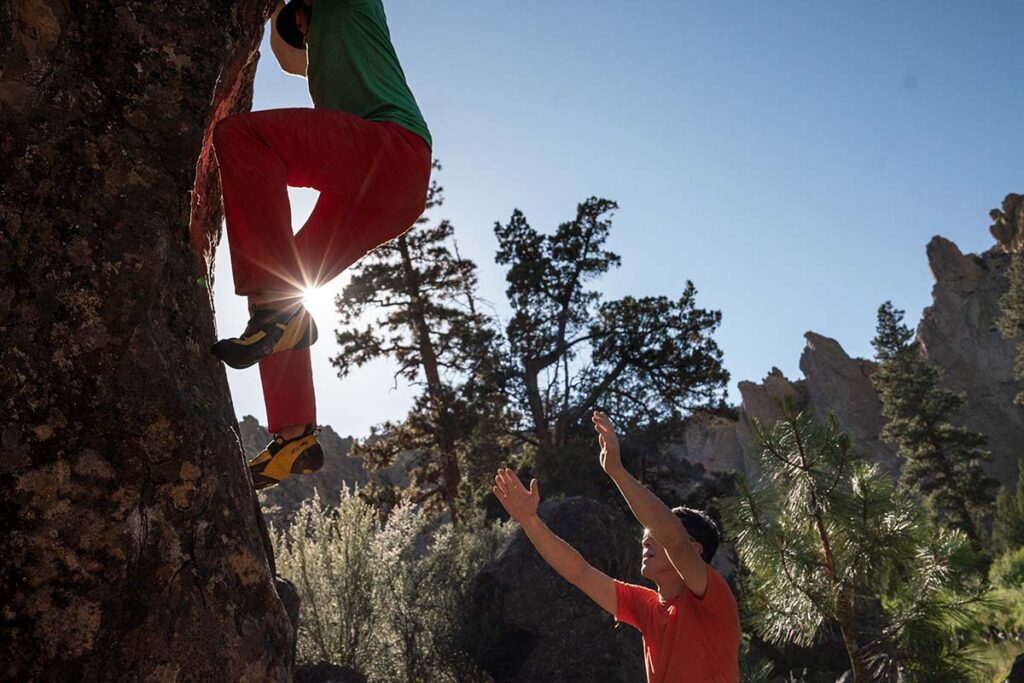
Gym
If you’re new to the gym, the best advice we can give you is to make sure your shoes are comfortable. If your feet aren’t happy, you probably won’t have an enjoyable introduction to rock climbing. Our second tip is to save money and choose basic (or even used) shoes to ensure you commit to the sport (for a full list of options, check out our roundup of the best running shoes). Shoes for beginners). Finally, you’ll probably appreciate the Velcro closure for the gym, as you’ll likely need to take your shoes off between rock sessions while getting ready. Models like the Black Diamond Momentum and La Sportiva Tarantulace mentioned above are a great place to start.
On the other hand, if you really enjoy indoor climbing (especially sport climbing), you should wear aggressive shoes designed for climbing. Look for soft rubber (Vibram). Models like Scarpa Drago and Five Ten Hangle are great options for the gym.

Stagnation: regular, moderate or aggressive.
We have already used the term “weakness” several times: it is one of the most notable characteristics of climbing shoes. Essentially, the drop determines the degree of curvature of the shoe’s sole: from banana (aggressive) to flat. The more aggressive the fall, the more force your toes will have to slide and land on small ledges, but the less your feet will be able to stay in their natural position. In general, aggressive shoes work well on steep rocks, while flat shoes work well on vertical or non-vertical terrain. Imagine the banana shape of a shoe like the La Sportiva Solution and imagine walking up to the protruding handles and being able to pull your body towards them. Then lean the rock towards the slab and you’ll realize that you need a flat shoe (like the Butora Endeavor 2.0 or TC Pro) that allows you to stand on your toes.
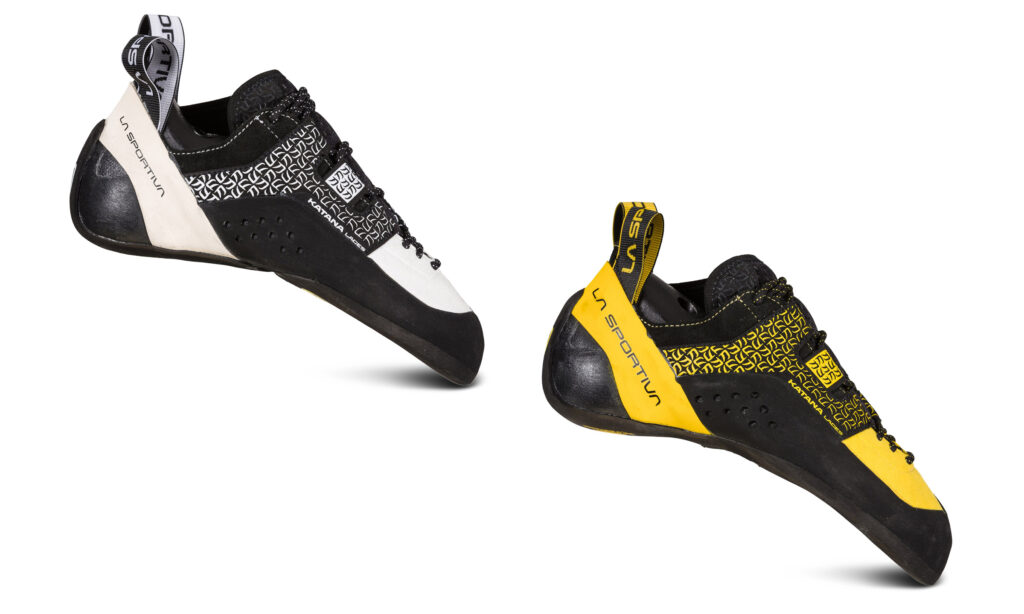
Soft vs hard
Stiffness is another reason why shoes differ from each other, but it’s difficult to make general statements here. It largely depends on preferences. While many rockers prefer ultra-soft shoes like the La Sportiva Solution or Solution Comp, others prefer stiffer models like the Butora Acro or Scarpa Instinct VS. The same goes for traditional climbers: the TC Pro are very popular, as are shoes like the Evolv Rave. We can be sure of one thing: rigid shoes give more support to the foot; If you’re just starting out, we definitely recommend starting with firm to medium-firm shoes until your feet get stronger. Soft shoes are softer and more flexible, and your feet will have to do a lot more work to support themselves.
Steel shoes will also provide greater strength as they provide a solid platform that allows the foot to rest on small ledges. For this reason we prefer a more resistant base for frames and vertical panels. Soft shoes, on the other hand, do not provide the traction needed for precise turns, but allow better progression on steep roads. Plus, you’ll have a better feeling of traction underfoot, which many climbers appreciate. Soft shoes are also more comfortable in a smaller size, so you can choose a snug, comfortable fit. Finally, keep in mind that the thinner the sole, the more flexible the shoe will be. For example, the 2mm sole of the Scarpa Instinct VSR makes this shoe more flexible than its sister, the Instinct VS (which has a 3.5mm sole).
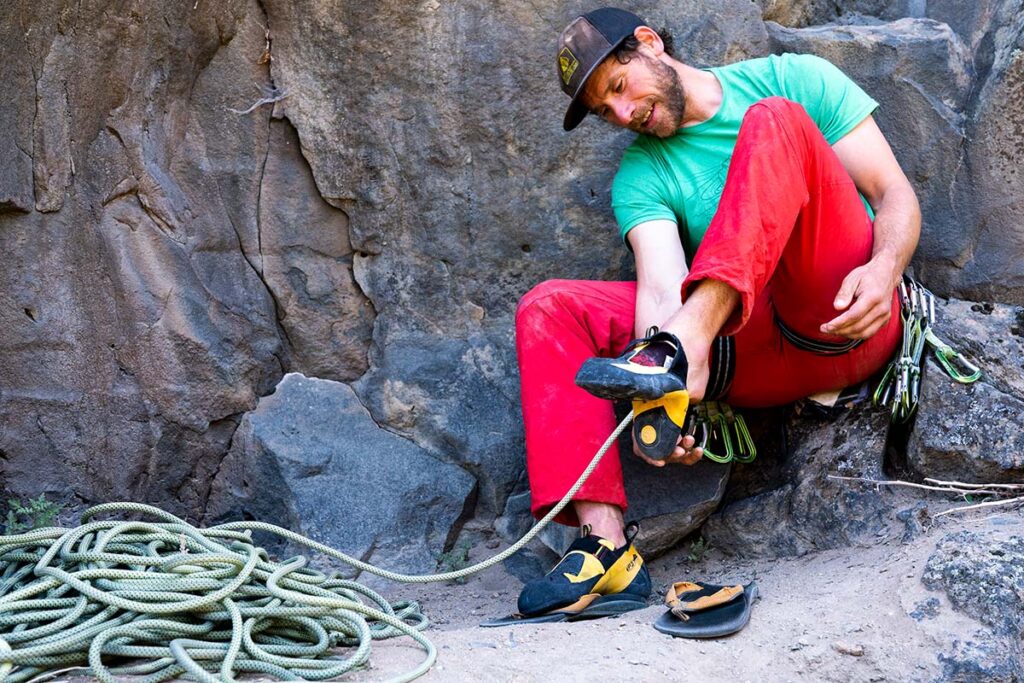
Closure: laces, velcro or slippers.
Closure systems should not be overlooked and can be the deciding factor in choosing the most suitable shoes for you. There are no hard and fast rules to determine which is better than the other and each has its own strengths and weaknesses for different forms of climbing. The three main closures are laces, Velcro, and insoles, and we’re seeing more and more Velcro and insoles combined into one closure that offers the best of both worlds.
laces
Boxes are a favorite place for climbers to put on and take off boots. It is more resistant to cracking than Velcro, which tends to come undone after repeated gluing. The laces also allow for an incredibly precise fit. Whether your feet are wide or narrow, you can get more versatility with lace-up sneakers like the La Sportiva Testarossa than with any other type of shoe. However, laces can be annoying if you take your shoes on and off frequently, and remember that if your feet often get caught in the slots, they will likely wear out over time.

Velcro
They are great for indoor climbing, bouldering and sport climbing where you often need to relax your legs between holds or rappels. However, Velcro can interfere with toe engagement; For steep rocks we prefer to have a large rubber patch on the top of the toe rather than a bulky strap. Additionally, Velcro can easily loosen if repeatedly pushed into the slots.

Upper: leather or synthetic
The upper is the part of the shoe located along the top and side of the foot. Most climbing shoes are made of leather or synthetic leather. The main difference to note between the two materials is that leather stretches, while synthetic materials generally do not. So, to help maintain their structure, many leather shoes also feature synthetic microfiber overlays and/or padding on the heel or toe (which also increases comfort and breathability). If your leather shoe doesn’t have one of these features (as many very delicate shoes do, like La Sportiva Theory and Scarpa Drago), expect it to stretch to its maximum size. It is therefore important to pay attention to the materials when choosing the size: no shoe should be particularly comfortable when you try it for the first time, but leather and unlined shoes should be comfortable.
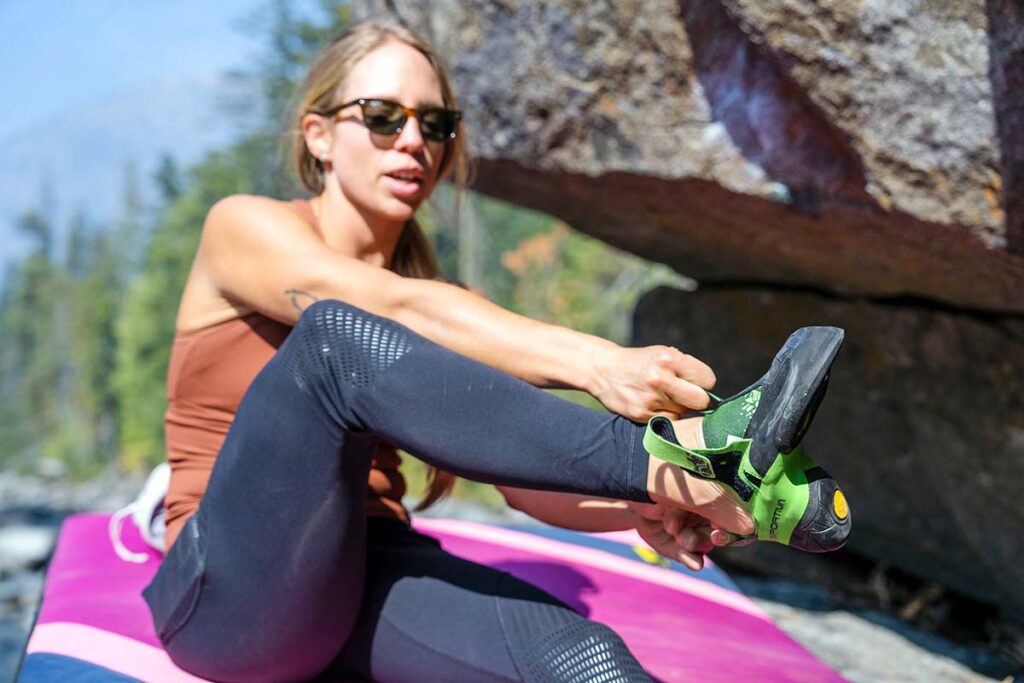
eraser
The rubber of climbing shoes is an esoteric topic. HF stealth technology or C4 stealth technology? How about specialty blends like Trax and Science Friction? Rubber is what sticks to the rock, so it’s very important, right? Yes, but maybe not as important as you think. All rubbers attempt to find a balance in the viscous continuum. Some, like Science Friction, lean towards the sticky side, while others, like Sportiva’s patented FriXion RS, gravitate towards the firmer side. In any case, it might make sense depending on your priorities. In fact, we know many climbers who use the women’s version of their favorite sports shoe (such as the Otaki or the Miura VS), since most of them are made with a grippier rubber (XS Grip 2) than the men’s version (XS Edge) . . Just understand that there is a trade-off: the more durable the rubber, the shorter its lifespan. The longer it sits, the less sticky it becomes.
Climbing shoes (La Sportiva Miura VS edge)
But since you asked (you did, right?), we have our favorite brands and models of gum. A quick look at the comparison table above is a clear indicator: Vibram and Stealth are our favorites. We particularly like the consistent performance of Vibram’s XS Edge and XS Grip, as well as Five Ten’s Stealth C4. Butora’s Neo Fuse is also quickly gaining our loyalty. Of course, when the rubber breaks, it doesn’t mean you have to remove the shoe. Recyclers aren’t hard to find these days (Rock and Resole in Boulder, CO is one of the most popular), and most give you the option to change the type of rubber on your shoe.

Fit and size
We can give you many rules for choosing your size, but in the end the size is very precise, unique and specific for each shoe and each foot. Some shoes may be too wide or too narrow for your feet. Some will stretch to their maximum size, while others will not stretch at all. Some are the right size for dress shoes (the Black Diamond line for example), while for others you will have to go down a few sizes. Therefore, the best thing you can do is: a) research what others are saying about the fit of the shoes and; b) Always try on shoes before buying them. If you’re ordering online, you can roll the dice or buy two pairs from a reputable retailer and return one.
Sneakers (La Sportiva Miura VS Fit)
However, some generalizations can be made. First of all, you want your sneakers to fit better than your street shoes. Secondly, austerity does not mean the cessation of trade. If you swim in shoes, they will probably be too loose. But if it takes a minute of traction to get an 8 on the pain scale, it’s too tight. Be honest with yourself: How high can you climb without letting discomfort interfere with your enjoyment of climbing? Many people sacrifice pain for the increased efficiency it brings to climbing, while others find that narrow shoes provide too little performance. It all depends on the terrain, the shoes and the climber. Third, keep in mind that supple leather and synthetic fabrics are generally not suitable. Finally, it’s worth noting that most people have one foot that is slightly larger than the other, so try both shoes on before purchasing. And if your feet vary greatly in size, choose Evolv: even if they don’t offer mixed-size shoes, they will stretch them for free.
Versions for men and women
Most climbing walls are available in men’s and women’s versions, the main differences being the shape and size of the rubber. Typically, men’s shoes have a wider fit, while women’s shoes are thinner in the toe and heel and are designed for feet with less volume. Second, you often see harder (and more durable) overlays like Vibram XS Edge in men’s shoes and softer (and stickier) Vibram XS Grip 2 in women’s shoes. As mentioned above, harder rubber is ideal for climbing ledges and slabs, while many mountaineers and climbers prefer softer rubber compounds for better grip and feel.
Climbing shoes
Mountaineers can be particularly picky about rubber, so it’s very common to see men wearing women’s shoes and vice versa. Ultimately, we like to think of the two shoe styles as Option A and Option B, rather than by gender. Bottura offers his shoes in “wide” and “narrow” versions rather than men’s and women’s, and it’s also common to see the designations “oversize” and “low profile.” Finally, keep in mind that some unisex models (like the popular La Sportiva TC Pro) are not made in different widths. If your feet are wider or narrower than most people’s, these shoes probably won’t fit you.
Tips on climbing shoes for beginners
Our list includes some of the best running shoes on the market, and many of the models above are used by professional climbers pushing the boundaries of the sport. Tommy Caldwell used the TC Pro in his free ascent of the Dawn Wall, Alex Puccio regularly used Scarpa Instinct VS boulders and Margot Hayes became the first woman to climb 5.15a using a La Sportiva solution. But they’re not just for a select few: these shoes are perfect for those who push their personal limits (just make sure your style matches your preferred system).
Climbing shoes for beginners (La Sportiva Tarantulace)
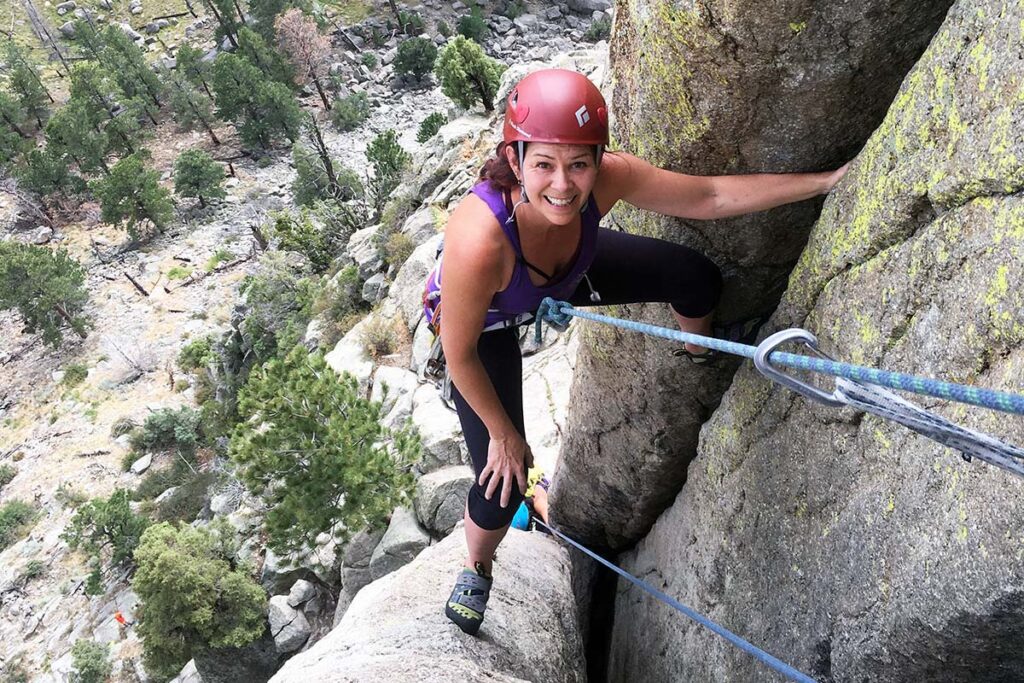
However, for new climbers, there are several reasons why choosing beginner shoes is a good idea. First of all, you don’t even know if you like climbing, so there’s no point in spending $200 on shoes when you can buy a pair for $50. Second, you may not yet know which style of climbing you gravitate towards: indoor climbing, climbing rock, traditional climbing or sport climbing. Third, all the high technology and premium materials used in most of the above-mentioned running shoes will go to waste due to poor footwork. In short, most new climbers won’t be able to tell the difference between a cheap shoe and a high-end model, so it’s best to choose the cheaper of the two. To help you make your purchase, we’ve compiled a list of the best running shoes for beginners here, including some of the best models for those looking to progress quickly.


